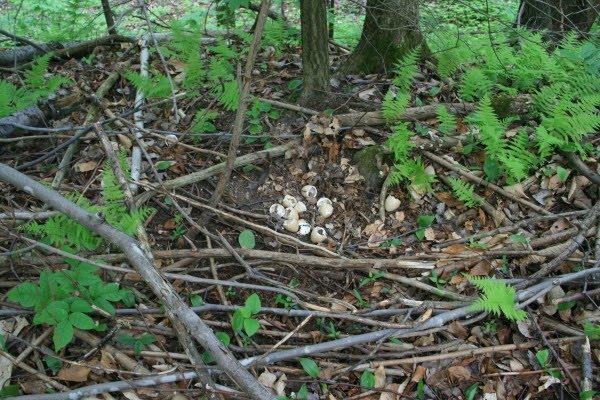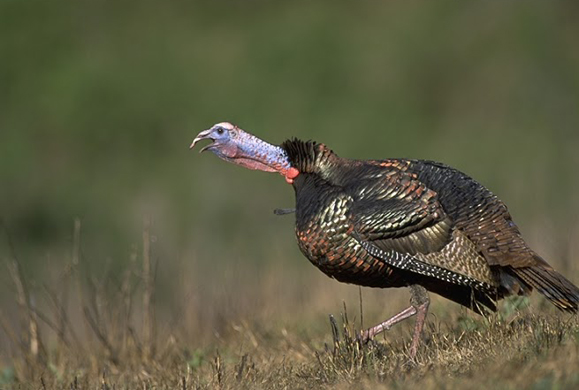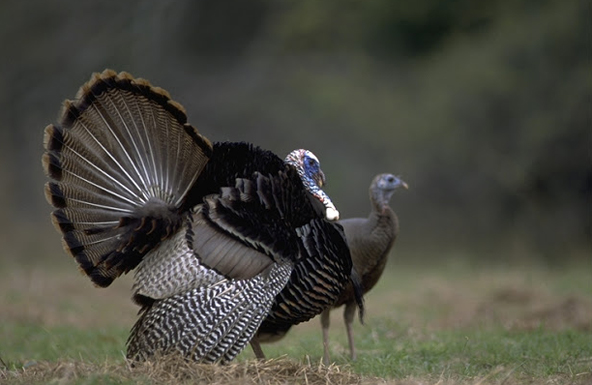LAST UPDATED: May 1st, 2015
Welcome back to part two of the top ten turkey tactics for spring success. In part one we counted down to number 6. In this article we will continue the count down until we hit the number one tactic that will increase your spring success. Let’s get right to it! (part 1)
5- Hunt by Boat
If you have never turkey hunted by boat you are really missing the boat (pardon the pun). This tactic works great for getting away from hunting pressure, hunting call shy toms, and covering lots of ground for Cutting & Running.
This method is best done using the buddy system. If you have a small shallow river, one that you are not able to use a motor in, or if you’re simply planning on taking the stealth approach, begin first by looking at a map. Try to locate a drop off point and a pick up location. The next morning, leave a vehicle at the pickup location and you and your friend head to the drop off location. Now all that is left is to quietly float down the river calling as you work your way to the pickup spot.
Most public land turkeys are hammered by hunters coming at them from the road. By taking the boat approach you can access these birds from a totally different direction than what they are used to. Also some river locations can be so remote that it’s possible to call in birds that have never seen a hunter before. This same tactic can also be applied to large bodies of water such as lakes and reservoirs to throw a curve ball at those heavily pressured birds.
4- Work Prime Nesting Locations in Mid-Morning to Afternoon
Long beards are like a whitetail buck during the rut. When they are with their hot hens often they stay with them for as long as they can. After the hen gets bred she will head to her nest to lay an egg. The tom will often hang with the last remaining hen of his flock and will follow her for as long as he can until he is convinced that she wants nothing to do with him, then he begins working his way through an area in search for more hens. This is your time to strike.
Nesting areas can be large arrays of cover, everything from fallow farm fields, CRP and prairie grasses, thick slashing, to dry marsh grass.
Similar to locating doe bedding areas, locating areas where hens like to hide in order to “nest” will increase your odds of success.
One thing nesting sites have in common is that they have thick vegetation to conceal the hen and her nest from prying eyes of hawks, owls, or other predators. If you’re on a midafternoon walk (aka scouting excursion), and a hen just flushes out of nowhere, note that location. Stop and study the area because you have just located a nesting area. Also, consider the habitat of that spot and apply it to other locations in your area to possibly find more nesting areas. Now that you have identified possible nesting locations, come back during mid-morning and early afternoon and work within hearing distance of these locations while doing a tactic called cutting and running. If you get no response doing some aggressive cuts and yelps, continue working your way around these areas. Just keep covering ground in search for that long beard that was pulled down into these locations by his hens.
3- Less is More, Know When to Shut Up
Far too often hunters think there is some other reason or an obstacle in the way that hangs that hot long beard up. When in reality they probably just called way too much. Keep in mind that every time you call to that long beard you are boosting his ego. If you gave a tom a mirror he would spend all day strutting in front of it and admiring how good looking he is; like a body builder in a gym. These birds are the most egotistical creatures in the world. Also the nature of things is for the hen to come to him. If you just keep hammering him with calls, sure he will gobble back and get you all excited but in reality you’re telling him how good looking he is and how he’s the king of the woods. This will do nothing to get him to break and come to you. However, if you build him up just enough to feel good about him and get him excited about your date, then set him up and make him think you left causing that ego of his to deflate like a balloon with a hole in it, he will come looking for you out of shear desperation.
While it is exciting to call a gobbler and hear him respond to your calls, sometimes the best thing is to be quiet after the initial call and let his insecurity mount until he decides to come to you.
The key to this tactic is taking his temperature, and no I don’t mean running at him trying to stab him with a thermometer. If he is hot and cranking gobbles back at you his ego is in full swing, especially if he double or even triples gobbles. When his ego gets this big, know when to shut up and put the call down. As you give him the cold shoulder he deflates, soon he begins to wonder what happened to you and begins thinking about you, not himself. As he does this he often works his way to you. One thing to keep in mind that as he works his way to you he is now on the defensive, he is on edge and looking for danger as he heads to the unknown. This will cause him to quiet right down. Far too often as this happens hunters think that the bird has lost interest, when in fact the reason he stopped gobbling is the tom is really working his way to you.
If you feel you need to give him some calls or want to check his locations we recommend you start off soft. Keep it to some soft purrs and clucks. If you get no response bump it up to some soft yelps. If still no response, bump it up to some louder yelps and even a cut or two. If still no response get ready because nine times out of ten he is coming in silently. If you call and he does respond but hasn’t budged it’s time to play hard ball because now it has become a mental game. Put those calls down and wait him out because the one with the most will power will be the victor.
2- Cut & Run and Cover Ground
This tactic is deadly during the later mornings to early afternoons. The key is to cover as much ground as possible to locate that hot bird. We always use the analogy that cutting and running for turkeys is like playing the slot machines. Every time you stop and call is like pulling the spin handle on the machine. If you pull that handle and make enough spins sooner or later you’re going to hit it big with a hot bird.
Just because you have a bow in your hand doesn’t mean the tactics must be different from those used by gun hunters. Both are equally deadly.
Look for large tracks of property, often public land fits the bill perfectly, and work your way through the property stopping and calling aggressively with cuts and yelps. If you don’t get a response, move several hundred yards and try again…..and again, and again. The key is to cover as much ground as possible looking for a hot bird that responds.
When hunting large areas such as public land a tactic we like to use instead of walking is traveling old logging roads or trails on a mountain bike. Not only is this a quiet means of transportation but a means that in most states is legal to use on roads or trails closed to motor vehicle traffic (Be sure to check with your state’s laws prior to utilizing). Walking at 2mph means it will take you one hour to walk two miles. If you cut and run by bike at an average speed of 8 mph, that means you can now cover six more miles looking for that hot bird in the same amount of time it took you to walk two miles. On the mountain bike I use, mounted on the handle bars is a bow holder to hold my bow while moving; the bow holder is designed to be used for ATV’s and mounts on handle bars. On the back I have a flat bike rack to strap a decoy or any other gear to as I travel down the logging roads looking for that next hot bird.
A gobbler is much like a buck during the rut. Use his own desire to bred against him and you are well on your way to filling your tag.
1-Don’t Call It Quits After the Woods Quiet Down
Just because the birds have flown down and all has gone quiet for the morning that doesn’t mean it’s time to call it a day and head back to camp for that much needed nap. If you haven’t been hunting after 10:00am in the turkey woods then you have really been missing out. You see, the nature of the wild turkey is that the tom sits up on his roost gobbling all across the woods to attract as many hens as he can. The hens slowly work their way to the tom after they fly down. This is then followed by the tom flying down to strut around and off he goes with his hens. As hunters we love to be in the woods at fly down for our first opportunity at the long beard, but also we enjoy listening to his thundering gobbles. The issue with this is that you will be competing with all of his hens. You have to ask yourself, why would the long beard leave a dozen or more hens for the sound of a hen off in the distance? More often than not, he won’t.
As the morning goes on and as the hens either get bred or head off to tend to their nests, the tom is left to head back on the prowl. This is your opportunity to strike a hot bird. Our experiences have shown that around 10:00 am and all through the afternoon is your best opportunity to call the long beard to your set. If you take one tip from this article this must be the one. Give it a try this spring; when other hunters are heading back to camp you will want to be hitting the woods to fill your tag.
Now that you are armed with 10 killer tactics for spring gobbler season, go out and fill your tag!
Conclusion
There you have it, the top ten turkey tactics to help you find spring success. As we mentioned earlier, the only thing predictable about turkeys is that they are unpredictable. There is no sure fire method to guarantee you success but if you try at least one of these top ten tactics you will be increasing your odds greatly. Remember, as with anything in life you get out what you put in.









